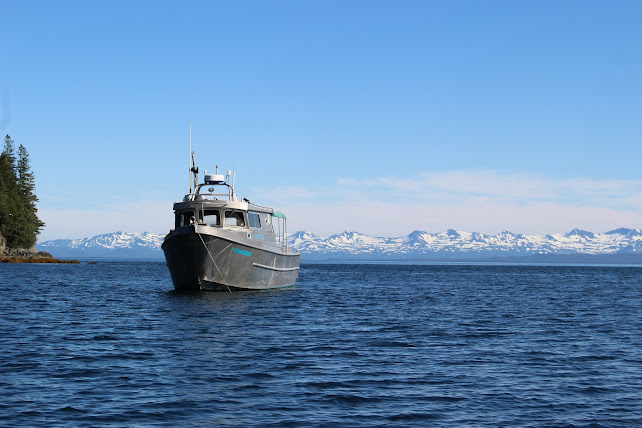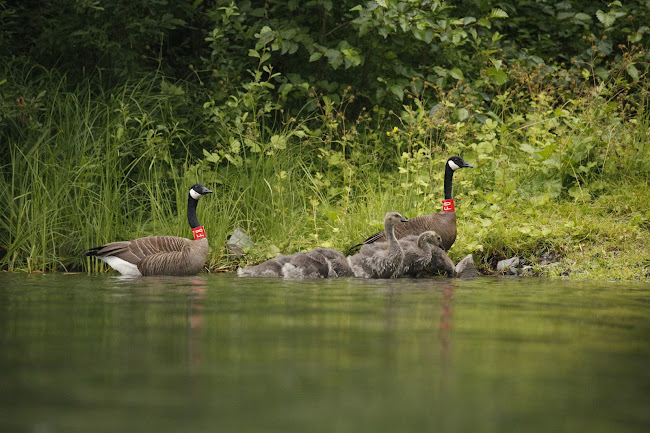Dusky Canada Geese & The Artificial Nest Island Program
The Dusky Canada Goose (Branta canadensis occidentalis) (Dusky or Duskies) is a subspecies of Canada Geese (Branta canadensis). They breed almost primarily in the Copper River Delta in South-Central Alaska and winter in the Willamette Valley and Lower Columbia River floodplain in Western Oregon and Southwest Washington. The Copper River Delta is the largest coastal wetland on the Pacific Coast at about 700,000 acres, and the Willamette Valley is the largest inland river valley in the Pacific Northwest. Currently, the Dusky Canada Goose population is hovering right around 15,000, giving them one of the smallest goose populations in North America. In late September, Duskies depart from post-molt staging areas down the Pacific Coast of Alaska and Canada until they reach their wintering grounds in Washington and Oregon in early November. They leave those grounds for the migration north in late March and early April and reach the breeding grounds in mid-late April.
Hunting regulations for Duskies are different in Canada and the United States. In Canada, Duskies are not recognized as a separate managed stock of Canada Geese under the Canadian Federal Hunting Regulations and therefor are considered Canada Geese when harvested by a hunter. In the United States however, many different regulations are in place for not only Duskies, but other Canada Goose subspecies as well. Hunters in Oregon and Washington in the United States typically have a bag limit of one. Additionally, hunters are required to complete a goose identification training and pass a test to get a harvest permit. These special regulations in the United States were a result of hoping to increase a declining population in the late 70s and early 80s. Other management strategies, like the artificial nest island program were also important implementations.
The 9.2 magnitude Alaska earthquake in 1964 accelerated many major successional changes in the Copper River Delta. This earthquake is one of the strongest ever recorded in North America and was recorded on the Richter scale in all but three U.S. States. Uplift on the Copper River Delta was reported to be up to 3.4 meters. Initially, dramatic changes were beneficial for Duskies and increased their population to over 26,000. As time passed however, the rise of the Delta caused the Dusky population to reach a low of about 9,000 birds. This dip in population, caused by an increase in predators due to habitat changes, lead to major adjustments in management tactics including the nest island program, but also the purchase of several important wildlife refuges in the Willamette Valley by the U.S. Fish and Wildlife Service. The artificial nest island program was initiated in 1984 by the Chugach National Forest and Ducks Unlimited. It was started in response to the Dusky Canada Goose population decrease in the early 1980s. The program’s purpose is to provide safe nesting sites for Duskies. Sites that provide adequate vegetation cover, are far from shore, and away from predators. Since that time, average nest success by Duskies is almost double their success when a natural site is used (35% for natural sites, 66% for artificial sites). Last year, the program monitored 374 nest sites throughout the 20 zones of the Copper River Delta. Of those 374, 90 were found to have Dusky nests and 47 were deemed successful. This year (2022) will be the 39th consecutive field season of the program. Over the course of the program, nest success rate has fluctuated, but the project aims to help reach the Pacific Flyway Council’s population goal of 20,000 Dusky Canada Geese.
***This
brief overview came from and can be found more in depth in the Pacific Flyway
Council’s Dusky Canada Goose Management Plan and the Artificial Nest Island
Program for Dusky Canada Geese on the Copper River Delta, Alaska - 2021 Annual
Report. Either are available upon request.***




Comments
Post a Comment